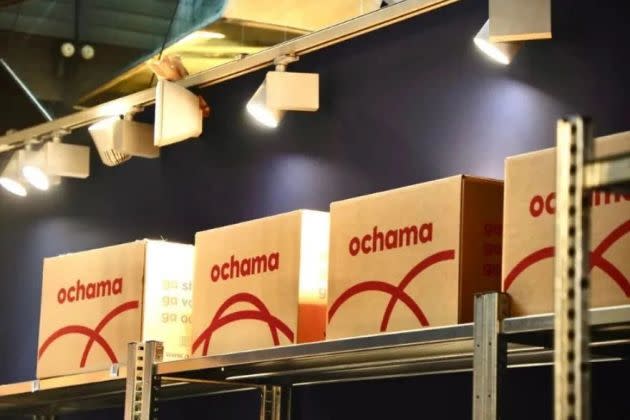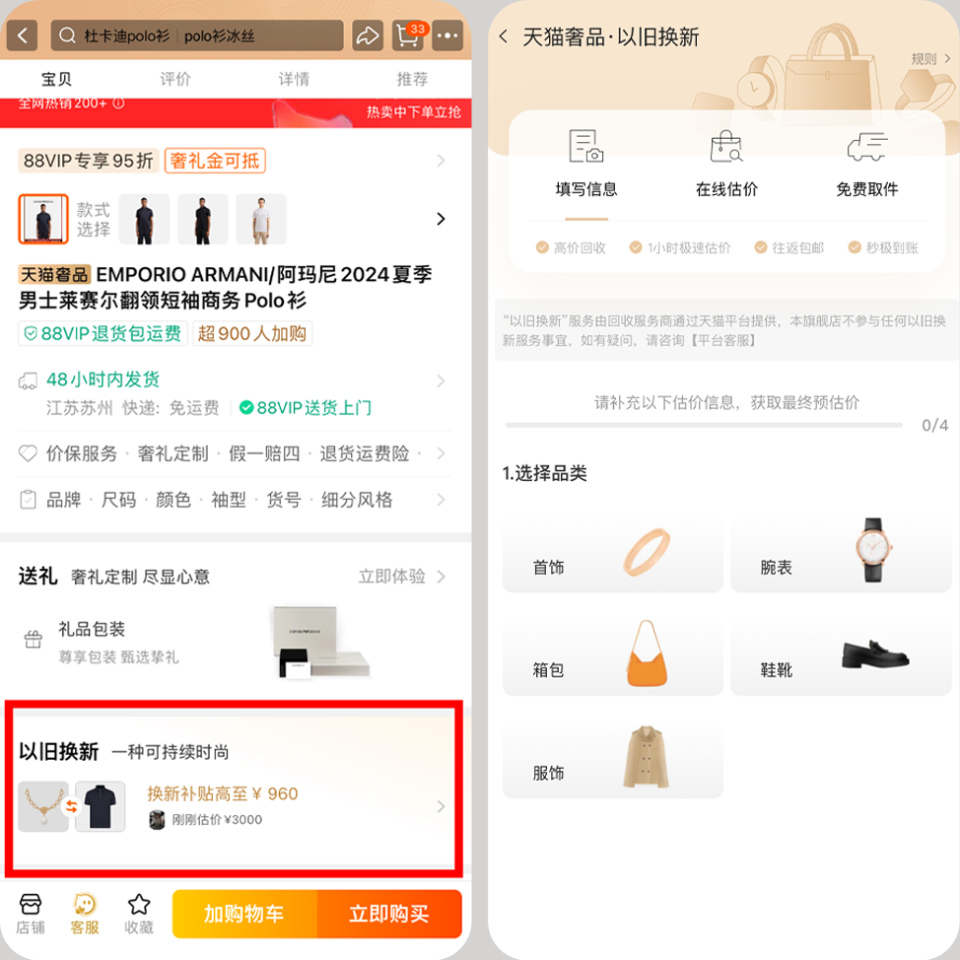China Insight: After the 618 Shopping Carnival, What’s the Way Forward for the Uncertain Online Fashion Market in China?

With 520 in front and 618 behind, the first half of 2024 is coming to an end. On the one hand, the social financing data released by the PBOC in April showed the first declines in nearly 19 years; on the other, the first-quarter earnings reports of Alibaba, JD and listed Chinese apparel companies came out in May and showed significant growth in the performance of the fashion sector.
How to interpret this gap between consumers’ real experiences and the actual economic data? Where is fashion consumption in China, especially online shopping, headed?
More from WWD
Lululemon Taps China's Hottest Comedian-turned-director Jia Ling as Ambassador
Russell Tovey Cocurates David Hockney Exhibition in Shanghai
Social financing (i.e., data on total social financing) is a key indicator in the analysis of China’s economic trends. The total social financing is high in a favorable economic environment and active consumer market and vice versa.
Last month the PBOC revealed that the newly added social financing in April was minus $27.4 billion, a rare decline. This was an obvious signal of a weak market, triggering intensified concerns about the future. However, at almost the same time, the significant growth reported by the e-commerce giants in their latest financial results injected confidence in the market.
Among them, Alibaba reported total revenues of $30.6 billion in the first quarter, up 7 percent compared to the same period last year, while JD reported revenues of $35.9 billion in the first quarter, which also was an increase of 7 percent compared to the same period last year. At the same time, PDD realized revenues of $11.97 billion in the first quarter by focusing on the sale of domestic brands through multiple channels and platforms, an increase of 131 percent year-on-year. Meituan, a platform that specializes in China’s consumer market and local services, achieved revenues of $10.11 billion, up 25 percent year-on-year, with the number of core local business users and merchants reaching record highs.
From a macro level viewpoint, exaggerated social financing data being “removed” was the result of the tightening of both the policy and market-oriented financing needs as well as the regulatory governance of the accumulation of idle capital (i.e., flow of funds in the financial system without flowing to the real economy). Financial statement data of these e-commerce giants provide an ideal perspective for the evaluation of whether the consumer market is active or not. In terms of the fashion sector, the first-quarter financial reports of China’s local apparel-listed companies show that most of the 17 A-share listed companies realized benign growth, while nearly a third of the companies, such as Hodo Group, Septwolves, and Sanfo Outdoor, showed varying levels of revenue declines.
Uncertain economic trends and the bleak status quo of the industry pose a new challenge for enterprises and brands focusing on online business. A new industry test has just begun.
Fashion Sector Led by E-commerce Giants Realized Remarkable Growth
Fierce competition and rounds of layoffs had stirred controversy and doubts about the e-commerce industry. However, the recently released financial data is undoubtedly reassuring, endorsing the trend for further growth for these e-commerce giants on the one hand and unveiling the mystery of the consumer market on the other.
Alibaba beat market expectations. Among its platforms, Taobao and Tmall Group’s quarterly online GMV saw double-digit, year-on-year growth with the number of quarterly purchasers and purchase frequency increasing strongly and the number of quarterly 88VIP members rising double-digit year-on-year, exceeding 35 million. And in the biggest highlight of the earnings report, the International Digital Business Group of Alibaba (its overseas business) achieved quarterly revenue growth of 45 percent year-over-year, and the overall quarterly orders for its retail platforms grew by 20 percent year-over-year.
JD Group, whose supply chain infrastructure assets reached $21.26 billion at the end of the first quarter, realized a 12 percent year-on-year increase. The sales of daily-use goods that had seen slowing growth for several quarters registered 8.6 percent year-on-year revenue growth in this quarter. As for user metrics, the number of quarterly active users has maintained double-digit year-on-year growth for two consecutive quarters, and their shopping frequency, NPS (Net Promoter Score), and the number of users in lower-tier cities are all improving, JD chief executive officer Xu Ran said in the financial report.
It is worth noting that JD, which has always been strong in logistics, has established the first fashion and luxury self-owned overseas warehouse, in France, in its international operations, enabling faster international logistics and distribution services. Ochama, the omnichannel retail brand of JD in Europe, operates more than 750 self-pickup sites, providing consumers with more flexible ways of receiving goods.
The Ignited 618 Under the Tone of Introducing New Products
Despite the unsatisfactory social financing data, a cooling in capital investment, the increased difficulty of financing and the failure of the once-applicable general mode of “hatching a hit, obtaining investment, increasing the investment in marketing and traffic, and continuing to replicate the hit,” there are still ways to create new hits in the online fashion market by leveraging digital innovation tools to enable a shortened development cycle.
Trying to imitate the full-cycle method featuring “first releasing, first show, first creation and first hit,” innovated by “Hey, Box!” of Tmall, leading brands or fast-growing emerging fashion labels placed big bets on the 618 “traffic C position.” Relevant statistics show that Tmall has invested more resources in new products this year, with resources devoted to completely new ones increasing by three times. In April and May, “Hey, Box!” debuted nearly 400 “super new products,” incubating four new products with sales of 100 million units, 29 super new products with 10 million unit sales and more than 120 super new products with sales of a million units.
In addition, introducing new products has become the main practice of all brands. On the platform end, the introduction of new products in early summer has become an industry habit. On the consumer end, the demand for and emotional value of new products has been amplified by the 618 shopping carnival.
This provides sports and outdoor brands with the golden opportunity for “introducing new” and “creating hits” of the year. But for the luxury goods companies that have always focused on 520 and other shopping festivals, how can they gain the most from this “mid-year challenge”?
However, the game was different this year. First, advance sale were canceled. Five major luxury groups — LVMH Moët Hennessy Louis Vuitton, Kering, Chanel, Hermès and Richemont — brought more than 200 luxury brands and more than 100,000 new products and goods to participate in this year’s 618 shopping carnival. Meanwhile, Tmall Luxury officially launched the “trade-in” service on June 6. Consumers can upload photos and information of their unused luxury goods online through the official Tmall flagships of more than 100 luxury brands, and the service provider will estimate the price to complete the resale. During the 618 period this year, the platform subsidy for “trade-in” reached up to $132.50, which could be used to buy new luxury products from brands in the Tmall flagship.
According to Tmall Luxury, it did not matter whether the pre-owned items intended to be resold were purchased on Tmall, as long as they were genuine items certified as 90 percent new and above through evaluation. Currently, used items of Hermès, Chanel, Dior, Louis Vuitton and other leading luxury brands, including jewelry, watches, bags, shoes, boots and apparel, can be resold as long as they meet the qualifications.

Tmall has launched a resale service for products that are relatively unused.
“To support the advocacy of a green and low-carbon lifestyle, Tmall Luxury has launched a trade-in service. At the same time, we also hope to work with consumers to live a life featuring upgrading without discarding the old, more environmental friendly fashion, and more sustainable way of consumption,” said Janet Wang, general manager of Tmall Luxury.
As of 9 p.m. on May 31, 185 brands realized turnover of more than 100 million yuan, more than 37,000 brands doubled their turnover, and 50 trendy categories exceeded 1 billion yuan in turnover. On JD International, four hours after the launch of 618, more than 180 brands realized year-on-year revenue growth of more than 100 percent, of which sports shoes and clothing brands Salomon, Nike, and Arc’teryx were up by five times, four times, and two times, respectively, while Ferragamo doubled growth and Van Cleef & Arpels more than doubled growth.
Previously, Bain Capital pointed out in its “China Luxury Market Report 2024” that the growth of luxury sales in China is slowing, with 5 percent growth expected this year compared to last year’s 12 percent year-on-year increase. As a matter of fact, the sales of luxury goods in China in the first quarter of this year were indeed unsatisfactory.
While the 618 festival slightly boosted the sector, it is not a long-term fix for the medium to long term. As the macroeconomic factors pressure the industry, growth rates will see continued fluctuations even as the leading brands remain enthusiastic about the Chinese market. As Bernard Arnault, founder, chairman and CEO of LVMH, said in a previous interview with WWD China at the 8th Viva Tech, “In the medium term, I’m optimistic about the Chinese market.”
Editor’s Note: China Insight is a monthly feature from WWD’s sister publication WWD China looking at trends in that all-important market.
Best of WWD

 Yahoo Finance
Yahoo Finance 